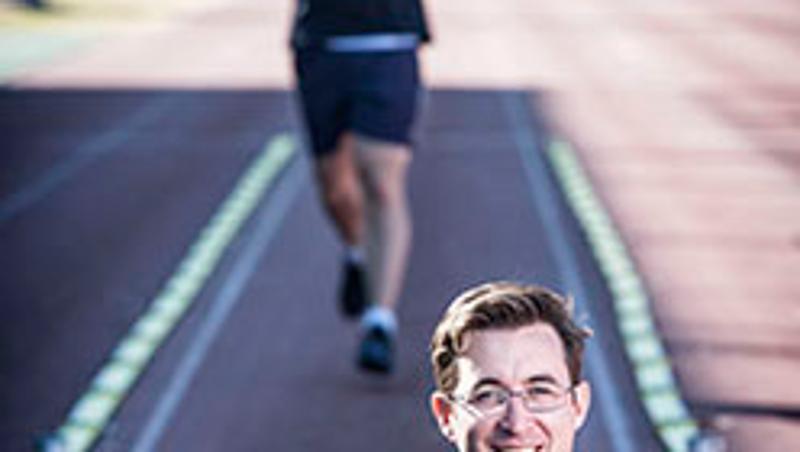
Umpires and judges are the unwitting focus of some of Australia's best fast bowlers, track and field athletes and gymnasts to improve their performance in competition, thanks to a new training technique discovered by a QUT researcher.
Dr Daniel Greenwood, from QUT's Institute of Health and Biomedical Innovation, with support from the Queensland Academy of Sport Centre of Excellence for Applied Sport Science Research, has studied the run-ups of elite athletes in sports such as cricket, long jump, triple jump and pole vault and found the vertical objects sportspeople see at the end of the runway significantly impact their performance.
"What we have found is as athletes prepare for their run-ups, they visually focus on something at the end of the runway to help them get their foot in the right place and make their final steps accurate," he said.
"My research has pinpointed what the visual element is that athletes use to regulate their run-up and found it is vertical objects such as judges, umpires, windsocks and spectators.
"Knowing this we have adapted our training environments to replicate the dynamic stadium environment, something that has not been standard practice until now. Most training settings are sterile, stable environments.
"We now make it part of training to have people stand in as judges, to have windsocks in sight and to have people milling around."
Dr Greenwood said this was a breakthrough finding and was being used to better train Queensland Academy of Sport athletes prior to competition.
As part of his PhD research, the sports biomechanist tested his theory by working closely with elite athletes connected to the Queensland Academy of Sport and Athletics Australia national jump centre based in Brisbane.
"I have been working with Robbie Crowther (long jump) and Henry Frayne (long jump) who recently competed at the Commonwealth Games, and also Olympic long jump medalist Mitchel Watt and Olympic champion hurdler Sally Pearson since 2010, as well as a host of world junior track and field athletes," Dr Greenwood said.
"What this has allowed me to do is test my research in a practical environment."
Dr Greenwood used specialised analysis methods to show when there was no vertical reference point in view, athletes made about 80 per cent of their adjustments to running behaviour in the final stages of their run-up, compared to just 40 per cent when there was a vertical object in view.
"This is a critical finding because we want athletes to make most of their adjustments in the early stages of their run-up, so their performance is less likely to be impacted with late stepping changes," he said.
"We also found that athletes who can master their first run-up perform better in competition. For example, a study of competition winners in long jump over a 10 year period, found 85 per cent led their competition from their first jump."
"This shows getting the run-up right quickly is vital to performance in competition."
Dr Greenwood said athletes were also being trained to embrace a changing environment where movement is part of the competition.
"We are educating our athletes that every run-up is not the same and they have to deal with that, then it is less likely that these changes will impact their performance on competition day."
Media contact:
Sandra Hutchinson, QUT Media (Tue, Wed, Fri), 07 3138 9449 or media@qut.edu.au
After hours, Rose Trapnell, 0407 585 901




